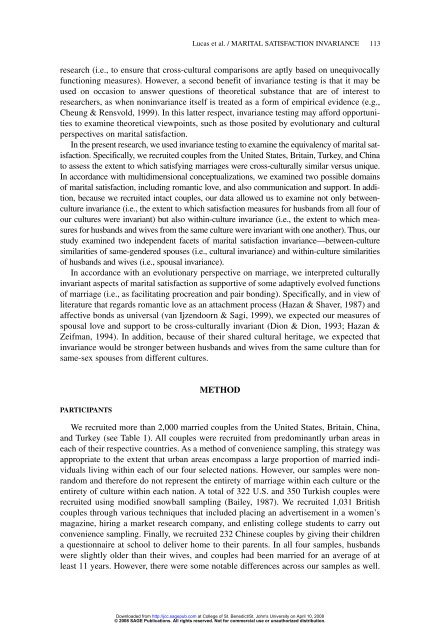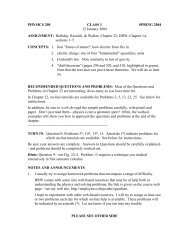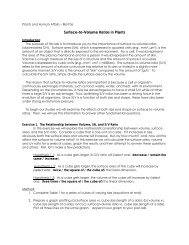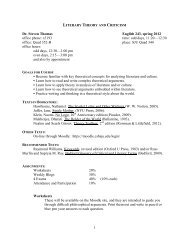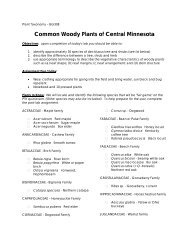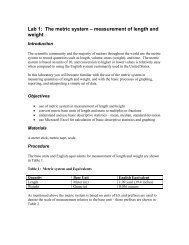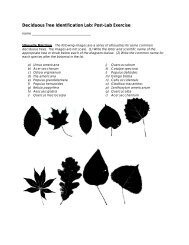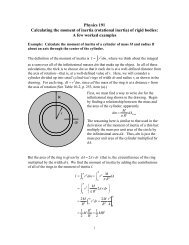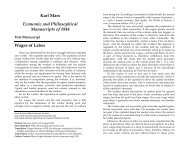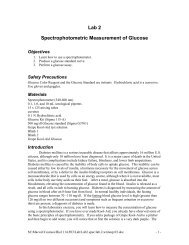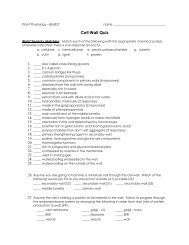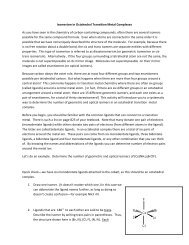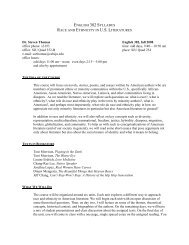Journal of Cross-Cultural Psychology - Employees Csbsju
Journal of Cross-Cultural Psychology - Employees Csbsju
Journal of Cross-Cultural Psychology - Employees Csbsju
Create successful ePaper yourself
Turn your PDF publications into a flip-book with our unique Google optimized e-Paper software.
Lucas et al. / MARITAL SATISFACTION INVARIANCE 113research (i.e., to ensure that cross-cultural comparisons are aptly based on unequivocallyfunctioning measures). However, a second benefit <strong>of</strong> invariance testing is that it may beused on occasion to answer questions <strong>of</strong> theoretical substance that are <strong>of</strong> interest toresearchers, as when noninvariance itself is treated as a form <strong>of</strong> empirical evidence (e.g.,Cheung & Rensvold, 1999). In this latter respect, invariance testing may afford opportunitiesto examine theoretical viewpoints, such as those posited by evolutionary and culturalperspectives on marital satisfaction.In the present research, we used invariance testing to examine the equivalency <strong>of</strong> marital satisfaction.Specifically, we recruited couples from the United States, Britain, Turkey, and Chinato assess the extent to which satisfying marriages were cross-culturally similar versus unique.In accordance with multidimensional conceptualizations, we examined two possible domains<strong>of</strong> marital satisfaction, including romantic love, and also communication and support. In addition,because we recruited intact couples, our data allowed us to examine not only betweencultureinvariance (i.e., the extent to which satisfaction measures for husbands from all four <strong>of</strong>our cultures were invariant) but also within-culture invariance (i.e., the extent to which measuresfor husbands and wives from the same culture were invariant with one another). Thus, ourstudy examined two independent facets <strong>of</strong> marital satisfaction invariance—between-culturesimilarities <strong>of</strong> same-gendered spouses (i.e., cultural invariance) and within-culture similarities<strong>of</strong> husbands and wives (i.e., spousal invariance).In accordance with an evolutionary perspective on marriage, we interpreted culturallyinvariant aspects <strong>of</strong> marital satisfaction as supportive <strong>of</strong> some adaptively evolved functions<strong>of</strong> marriage (i.e., as facilitating procreation and pair bonding). Specifically, and in view <strong>of</strong>literature that regards romantic love as an attachment process (Hazan & Shaver, 1987) andaffective bonds as universal (van Ijzendoorn & Sagi, 1999), we expected our measures <strong>of</strong>spousal love and support to be cross-culturally invariant (Dion & Dion, 1993; Hazan &Zeifman, 1994). In addition, because <strong>of</strong> their shared cultural heritage, we expected thatinvariance would be stronger between husbands and wives from the same culture than forsame-sex spouses from different cultures.PARTICIPANTSMETHODWe recruited more than 2,000 married couples from the United States, Britain, China,and Turkey (see Table 1). All couples were recruited from predominantly urban areas ineach <strong>of</strong> their respective countries. As a method <strong>of</strong> convenience sampling, this strategy wasappropriate to the extent that urban areas encompass a large proportion <strong>of</strong> married individualsliving within each <strong>of</strong> our four selected nations. However, our samples were nonrandomand therefore do not represent the entirety <strong>of</strong> marriage within each culture or theentirety <strong>of</strong> culture within each nation. A total <strong>of</strong> 322 U.S. and 350 Turkish couples wererecruited using modified snowball sampling (Bailey, 1987). We recruited 1,031 Britishcouples through various techniques that included placing an advertisement in a women’smagazine, hiring a market research company, and enlisting college students to carry outconvenience sampling. Finally, we recruited 232 Chinese couples by giving their childrena questionnaire at school to deliver home to their parents. In all four samples, husbandswere slightly older than their wives, and couples had been married for an average <strong>of</strong> atleast 11 years. However, there were some notable differences across our samples as well.Downloaded from http://jcc.sagepub.com at College <strong>of</strong> St. Benedict/St. John's University on April 10, 2008© 2008 SAGE Publications. All rights reserved. Not for commercial use or unauthorized distribution.


